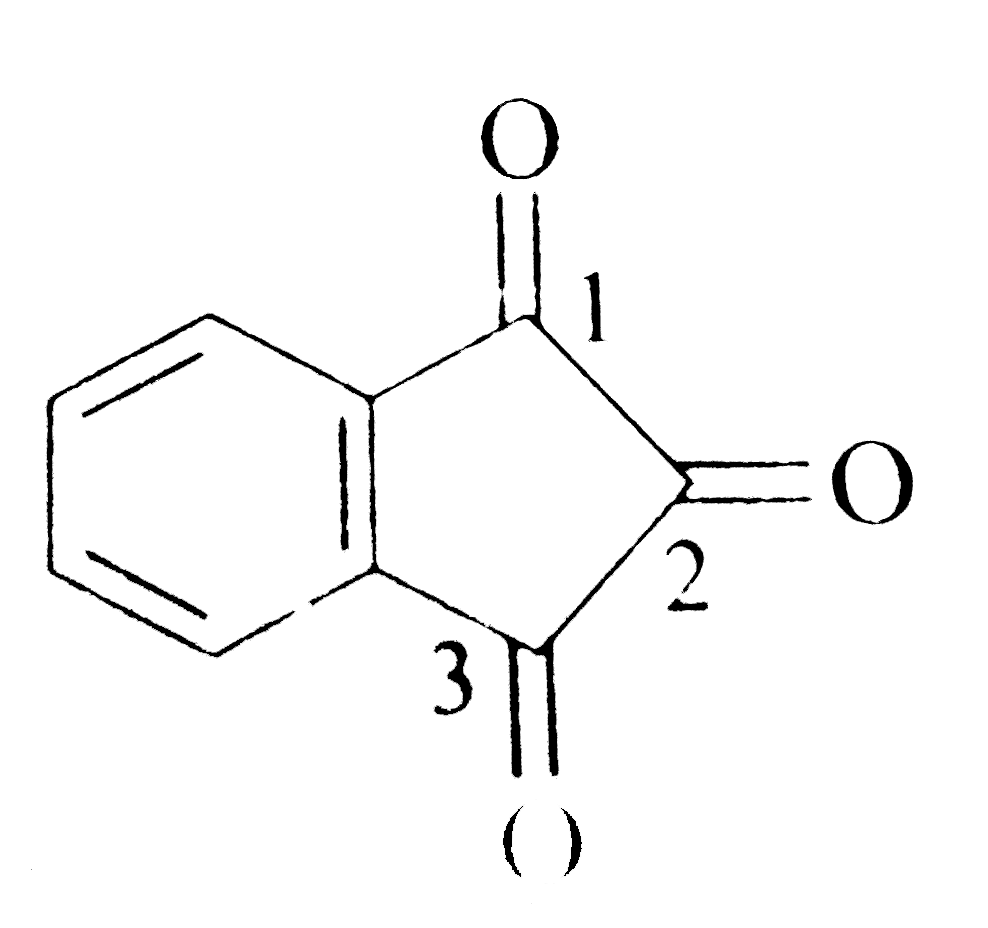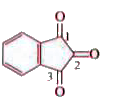Carbonyl compounds mainly show nucleophilic addition. reactions. Why? Solution in Punjabi
Both aldehydes and ketones contain a polar carbonyl group. As oxygen is more electronegative than carbon, the oxygen atom of the carbonyl group carries a small negative charge while the carbon atom attached to it carries a small positive charge. This positively charged carbon atom is readly attacked by nucleophiles. resulting in the formation of an anion by the transference of the π-electrons to the oxygen atom. The anion thus formed then takes up a proton either from the solvent (usually water ) or from the reagent to give the addition product. The reaction in general, may be represented as :

In case of weak nucleophiles likes ammonia or its derivatives the reaction is usually carried out in weakly acidic medium. In the presence of acids the oxygen atom of the carbonyl group gets protonated. This increases the positive charge on the carbon atom, thus facilitating the attack of the weak nucleophile.

For example : On addition HCN, cyanohydrin of aldehyde and ketones are formed.
CH3−H∣C=OAcetaldehyde+HCN→CH3−H∣C∣CN−OHAcetaldehyde cyanohydrin
CH3−H∣∣C=CH3Acetone+HCN→CH3−OH∣C∣CN−CH3Acetone cyanohydrin
Topper's Solved these Questions
- BOOK - BETTER CHOICE PUBLICATIONCHAPTER - ORGANIC COMPOUND WITH FUNCTIONAL GROUP CONTANING OXYGEN-IIEXERCISE - Question Bank (12.5 Uses Of Aldehydes And Ketones)3videos
ORGANIC COMPOUND WITH FUNCTIONAL GROUP CONTANING OXYGEN-II
- BOOK - BETTER CHOICE PUBLICATIONCHAPTER - ORGANIC COMPOUND WITH FUNCTIONAL GROUP CONTANING OXYGEN-IIEXERCISE - Question Bank (12.6 Nomenclature And Structure of Carboxylic Group)8videos
ORGANIC COMPOUND WITH FUNCTIONAL GROUP CONTANING OXYGEN-II
- BOOK - BETTER CHOICE PUBLICATIONCHAPTER - ORGANIC COMPOUND WITH FUNCTIONAL GROUP CONTANING OXYGEN-IIEXERCISE - Question Bank (12.2 Preparation of Aldehydes And Ketones )10videos
ORGANIC COMPOUND WITH FUNCTIONAL GROUP CONTANING OXYGEN-II
- BOOK - BETTER CHOICE PUBLICATIONCHAPTER - HALOALKANES AND HALOARENESEXERCISE - QUESTIONS158videos
HALOALKANES AND HALOARENES
- BOOK - BETTER CHOICE PUBLICATIONCHAPTER - POLYMERSEXERCISE - QUESTIONS42videos
POLYMERS
Similar Questions
What is formalin solution ? Give its one use..
05:01View SolutionWrite the IUPAC name of salicylic acid.
05:09View SolutionWrite short note on Rosenmund's reaction.
03:13View SolutionClassify the following organohalogen compounds as alkyl, allylic, benzylic, vinylic and aryl halides. Also state the type of hybridisation of the carbon of C-X band.

where X stands for halogen04:42View SolutionExplain the terms polymers and monomers ?
01:44View SolutionWhich carbonyl group of the given compound is most reactive for nucleophilic addition reaction ?
 01:42View Solution
01:42View SolutionAlkenes
 and carbonyl compounds
and carbonyl compounds  both contain a π bond but alkenes show electrophilic addition reactions whereas carbonyl compounds show nucleophilic addition reactions. Explain.02:47View Solution
both contain a π bond but alkenes show electrophilic addition reactions whereas carbonyl compounds show nucleophilic addition reactions. Explain.02:47View Solutionकार्बोनिल यौगिक नाभिक-स्नेही योग अभिक्रिया दिखाते हैं, क्यो?
02:15View SolutionThe general order of reactivity of carbonyl compounds for nucleophilic addition reactions is -
01:43View SolutionThe reactivity of carbonyl compounds towards nucleophilic addition reaction gets affected by
01:41View SolutionWhich carbonyl group of the given compound in most reactive for nucleophilic addition reaction ?
 View Solution
View SolutionWrite the mechanism of nucleophilic addition reactions of carbonyl compound .
39:42View SolutionAlkenes and carbonyl compounds both contain a pi bond but alkenes show electrophilic addition reactions whereas carbonyl compounds show nucleophilic addition reactions. Explain.
08:12View Solutionन्यूक्लियोफिलिक योग अभिक्रियाओं के लिये कार्बोनिल यौगिकों की अभिक्रिया का सामान्य क्रम होगा
01:46View SolutionWrite the mechanism of nucleophilic addition reactions of carbonyl compounds.
View SolutionAlkenes and carbonyl compounds both contain a pi bond but alkenes show electrophilic addition reaction whereas carbonyl compounds show nucleophilic addition reactions. Explains.
04:30View Solution

